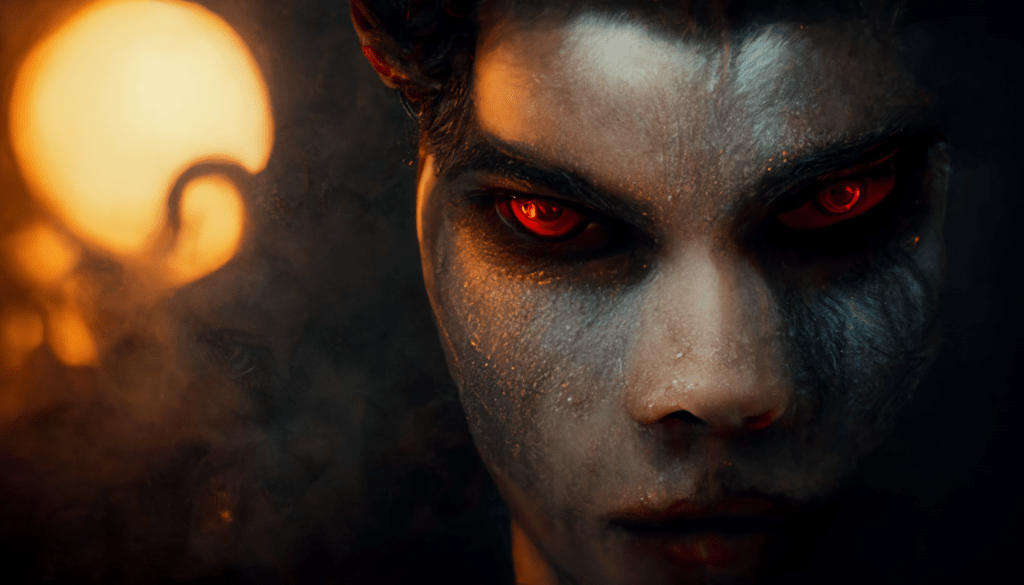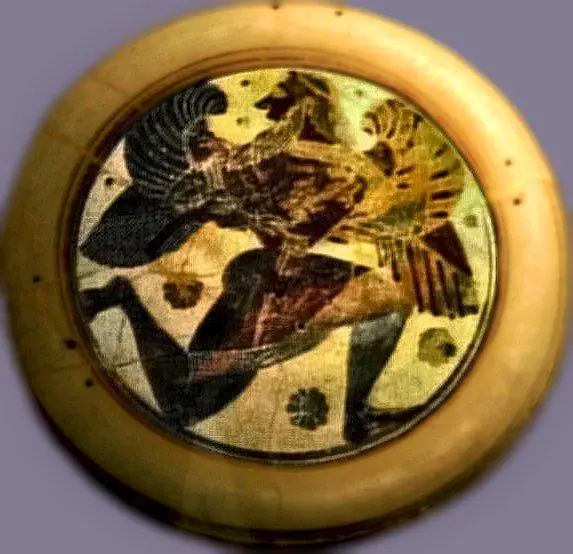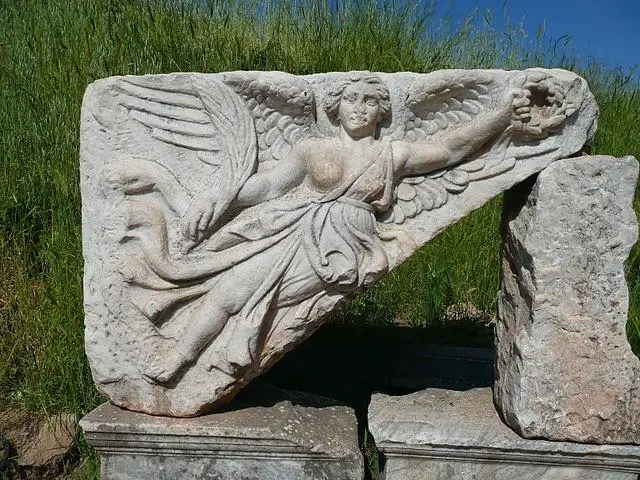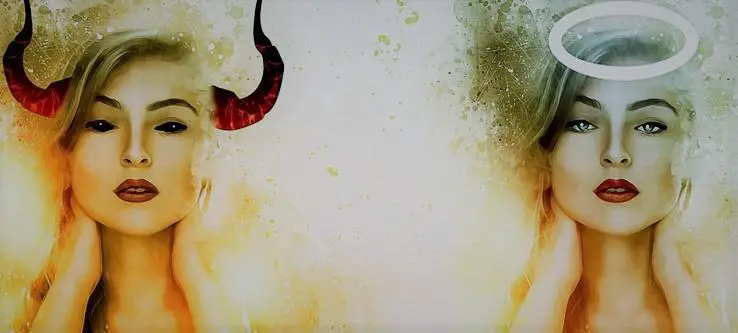Share the Lore!
By: Alex Postrado
A Guide To The Daimons Of Greek Mythology
In today’s world, it is difficult to hear the word demon and not conceive images related to the words evil, sin, damnation, and hell.
The idea that demons are innately bad companions of the Devil comes almost naturally to a lot of us.
And why would it not be when two strong influences 一 religion and pop culture 一 point us to the same, somewhat monochromatic idea.
For one, the Christian bible represents demons as fallen angels who rebelled against God, alongside their leader Satan.
On the other hand, the film, literary, as well as art, and music industry, depict demons as corrupted fiends who either tempt or torture unfortunate human beings.
As familiar as these “sinister” portrayals of demons might sound, though, remnants of antiquity tell us otherwise about them.
Instead of demons, they are called daimons or daemons.
And as Plato muses in his work, The Symposium, they are found in everything that is “between divine and mortal”.
There are a handful of ways one can define daimons and there is no shortage of names one can aim to remember.
But, unlike what some may imagine, daimons are actually nothing like the typically horned, feared figures most of us have come to know.

Just about what exactly daimons are 一 well, you would figure out as you go.
What is a Daimon?
Traceback the origin of the concept of daimons and you will find yourself in Ancient Greece, where the term daimon translates to English words “godlike, “fate”, or “power“.
Likely derived from the Proto-Indo-European root da or dai 一 meaning, “to divide” 一 the word was eventually borrowed to take its Latin form daemon.
Despite the slight change in spelling, daemon remained largely synonymous with the Greek daimon.
Though, as noted earlier, daimons can be described, not in a single manner, but in sundry ways.
The word daimon could refer to:
- The intermediary entities that exist in the space between the celestial bodies and their terrestrial inhabitants, as Greek philosopher Proclus suggests;
- The minor divinities or spirits of Greek religion and mythology that are of the same nature as both deities and mortals, and have the capacity to either be good, evil, or morally ambiguous;
- The servants of theoi or Greek gods, as seen in Homer’s Iliad and Odyssey;
- The quasi-divine personification of supernatural forces that are believed to influence the actions and emotions of humans;
- The “peculiar mode of activity” of ancient Greek gods;
- The spirits of “great and powerful figures” in myths, raised to divine ranks after their corporeal death, as in Hesiod’s Theogony;
- The men from the Golden Age 一 as told, again, by Hesiod 一 who served as tutelary deities or guardian spirits of mortals;
- Or, the spiritual beings 一 tantamount to the Christian angel 一 assigned to watch over every individual from their birth.
The Categories of Daimons in Ancient Greece
Golden or Silver
In ancient Greek traditions, daimons are rarely seen as figures. Rather, they are said to be felt 一 perhaps, even imagined.
The Greek poet Hesiod sorted daimons into two classes:
The Daimones Khryseoi or Daemones Chrysean;
And the Daimones Argyreoi or Daemones Argyrean.
The Daimones Khryseoi were the so-called “Golden daimons” or “men of the Golden Age“.
In Hesiod’s myth, when Cronus still ruled over the world, he created a “Golden race” of thirty-thousand men. They were mortals, but they were said to possess noble hearts, extraordinary strength, and a wisdom that was unlike that of any human.
Owing to these special gifts 一 as well as humans’ perceived moral frailties and susceptibility to corruption when handed power 一 the Daimones Khryseoi were appointed by Cronus to govern over all of mankind 一 until Zeus seized the throne.
The fall of Cronus meant that the “blissful social order” that the Daimones Khryseoi had kept would have to come to an end.
Luckily for them, they were immortalized by Zeus as earth-dwelling spirits, tasked to eternally watch over mankind and occasionally reward them for their goodwill.
But, unfortunately for humans, the “Silver daimons” that Zeus placed to take over the Daimones Khryseoi’s former post were inferior in both deeds and power.
This meant that they were not as pure-hearted as their predecessors.
They “fought and sinned against one another“. And thus, Zeus gave them less authority over the world.
Unlike the Daimones Khryseoi, the “men of the Silver Age” 一 or Daimones Argyreoi 一 could not punish humans. They can, however, observe and report any misdeeds to Zeus or the other gods.
Eventually, the Daimones Argyreoi were turned by Zeus into underground spirits. And their job 一 to forever nurture and maintain the earth’s fertility.

Good or Evil
During Hesiod’s time, the myth of the Daimones Khryseoi and Daimones Argyreoi was known by many.
The Golden daimons of Cronus were revered by ancient Greeks for their untainted virtue. And the same went for the Silver daimons albeit their past lapses.
But, when the Hellenistic period came, the lower-ranking Daimones Argyreoi were divided into two more categories:
The benevolent agathodaimons, derived from Greek agathós 一 meaning, “good”, “noble”, “lucky”, “useful”, or “brave“;
And the malevolent kakodaimons, from the word kakós 一 meaning, “bad” or “evil”.
As time went by, a new category emerged and replaced the agathodaimons as the good and opposing spirits to the kakodaimons.
They were called eudaimons.
And the original agathodaimons were consequently turned into either house spirits or personal companion spirits, commonly represented by serpentine symbols.
Abstract Personifications
In ancient Greco-Roman traditions, daimons can also be indexed into seven classes, based on the abstract things they represent.
Emotions and States of Mind
Daimons under this class include:
Deimos and Phobos – the personified spirits or daimons of fear, representing terror and panic, respectively;
Eris – the daimon of strife, contention, rivalry, and discord, best known for being the catalyst of the Trojan war;
Nemesis – the daimon of divine retribution, indignation, and revenge, who also measures and deals out happiness and sufferings to humans.
Morality
Daimons under this class include:
Aidos or Aedos – a companion of Nemesis and the personified spirit of modesty, reverence, shame, and self-respect;
Dike or Dicé – the daimon of justice and fair judgments, as well as a third of the Horai;
Apate – the female counterpart of Dolos and the daimon of fraud, deceit, and guile.
Actions
Daimons under this class include:
Thalia – the personified spirit of festivity and banquets, frequently depicted to be dancing around in circles with the two other Kharites;
The Hysminai – the spirits of fighting and non-martial or close combat;
Nike or Nicé – the winged daimon of victory, associated with wreaths and golden sandals.

Human Condition
Daimons under this class include:
The Keres and Thanatos – the personifications of death, with the former representing bloody deaths and the latter claiming the gentle, non-violent ones;
Hypnos – twin brother of Thanatos and the daimon of sleep;
The Maniai – the personified spirits of insanity, madness, and crazed frenzy.
State of Society
Daimons under this class include:
Harmonia – the opposite of Eris and the daimon of harmony and concord, who “presided over cosmic balance”;
Dysnomia – the daimon of lawlessness;
Polemos – the personified spirit of war and battle.
Voice
Daimons under this class include:
Peitho – the personification of persuasion and seduction;
Gelos – the spirit of laughter and an adviser of the festive god of fertility and wine, Dionysus;
Momus or Momos – the daimon of mockery, scorn, ridicule, and satire, infamous for being expelled from Mount Olympus for taunting the gods.
Qualities
Daimons under this class include:
Tekhne or Techne – the daimon of art, craft, and technical skill;
Alke – the personified spirit of battle strength and courage;
Coalemus or Koalemos – the daimon of stupidity and utter foolishness.
Other Categories
Finally, daimons in Greek mythology can also be classified into:
The Daimones Keramikoi, which are composed of five sinister spirits 一 including Suntribos or shatterer, Smaragos or smasher, Asbestos or charrer, Sabaktes or destroyer, and Omodamos or crudebake;
The Daimones Khthonioi or the personified spirits of the underworld;
The Daimones Georgikoi or the daimons presiding over agriculture and farming;
The Daimones Halioi or the daimons of the sea;
The Daimones Nomioi or the spirits of the wild, as well as the countryside and pastureland;
The Daimones Ouranioi or the personified spirits of the sky;
And the Daimones Proseoos or the evil daimons that haunt the dark corners of the island of Rhodes.
The Evolution of Daimons
While similar beings may have already drawn breath in other ancient cultures before daimons even entered the Greek pantheon of gods and other divinities, these personified spirits of Ancient Greece remain the first recorded concept to influence the creation of the modern-day demon.
And its development started with “the rise of monotheism“.

More specifically, Christianity.
In earlier translations of the Bible, as a way to tell apart which use of the word god refers to Christianity’s “one true God” and which talks of the ancient Greek pagan deities, Christian scholars used the term daimon 一 although, not in the way that it was intended to be used.
Taking inspiration only from the kakodaimons of the Hellenistic period and completely sweeping the rest of the term’s meanings under the rug, Christian leaders slowly altered how people defined the word daimon.
These new daimons became solely known for their evil disposition 一 marked by their gleeful encouragement of sinful actions and the heralding of bad luck.
Over time, the Greek name was anglicized into the form that we know today 一 demon.
And soon, the general concept of daimon 一 especially, kakodaimon 一 became linked 一 even somewhat synonymous 一 with the Christian bible’s fallen angels; as so the Greek daimon and later chthonic spirit Angelos 一 meaning, “messenger” 一 was converted into the Christian concept of angels.
Furthermore, the “guardian spirit” element in the Greek daimon was also ultimately extracted from its original set of definitions and was developed into the Christian belief in assigned guardian angels.
Just like how the concept of conscience was eventually built around the Greek idea of personified spirits, having influence over the way humans feel and act.
Today, the ancient meaning of the word daimon has largely been buried under thick blankets of mostly Christian teachings 一leading us to believe that daimons are actually demons:
Ghastly, unholy, and burning in the pits of hell.
But, if Greek myth and traditions were able to teach us something, it is that this only touches one side of daimons.
They are also as good as they are the evil; the spirits and the abstract forces; the ambiguous and the precise; and the go-between for all gods and mortals.
References:
Demon - Greek Religion Daemones (Spirits) - Theoi Project Daemon - Mythology Daimon - Encyclopedia Daemon - Myths And Folklore From Daimon To Demon: The Evolution Of The Demon From Antiquity To Early Christianity
